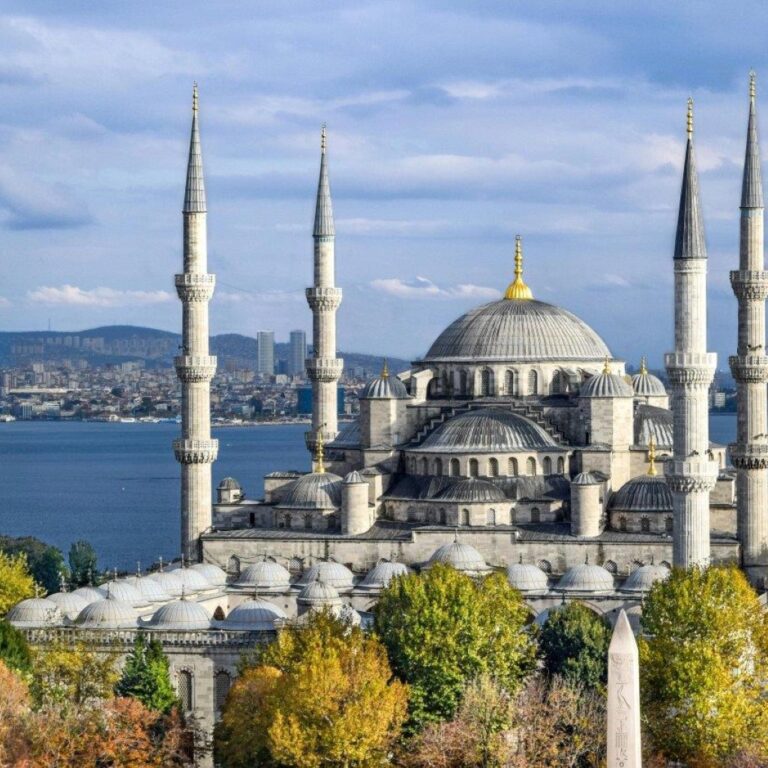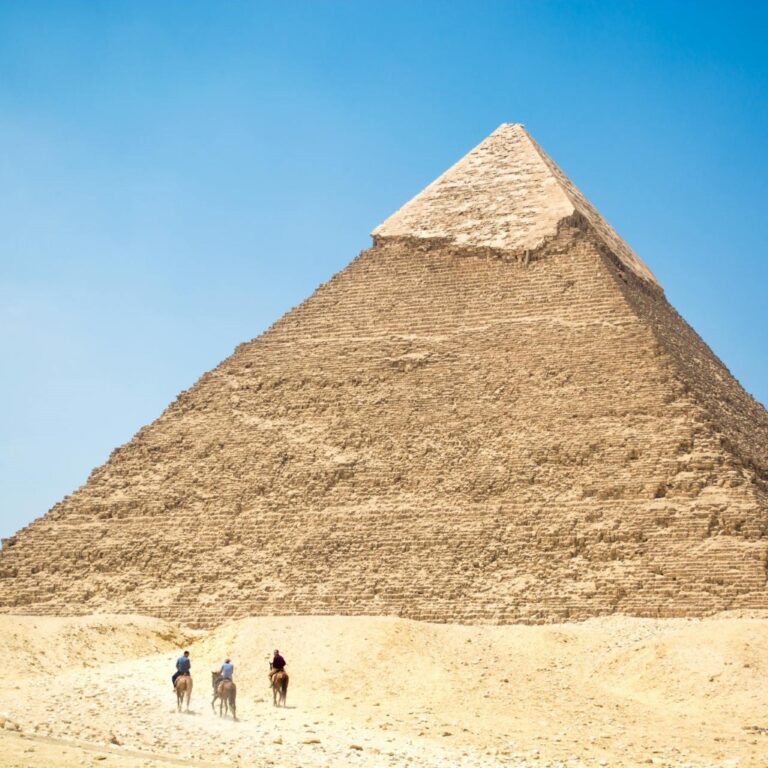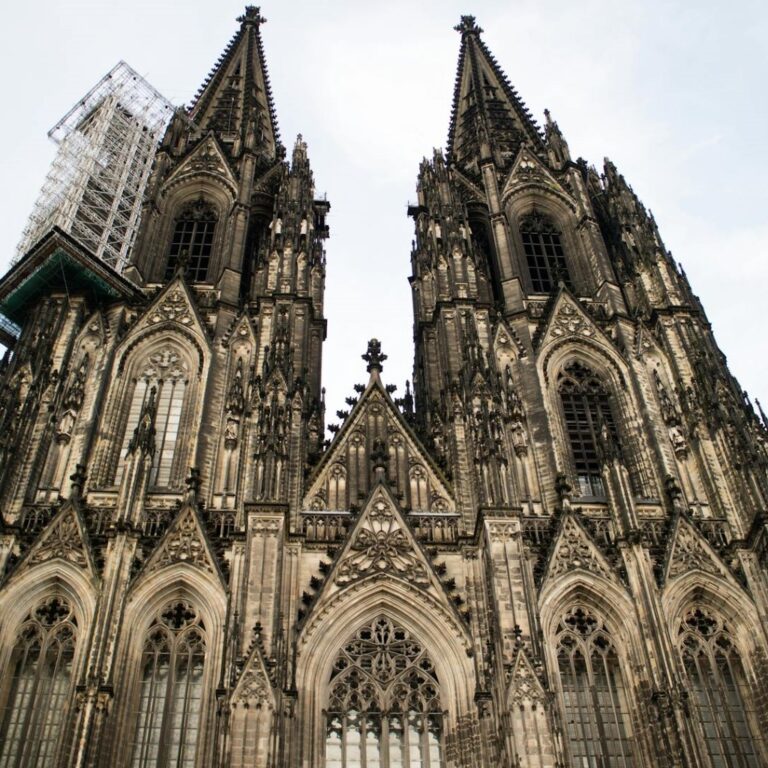Sultan Ahmed I commissioned the Blue Mosque and oversaw its construction between 1609 and 1616 during the Ottoman Empire.
People call it the Blue Mosque because blue tiles adorn its interior walls.
Architect Sedefkâr Mehmed Ağa, a pupil and senior assistant of the famous Mimar Sinan, designed the Blue Mosque.
The Blue Mosque features one main dome, eight secondary domes, and six minarets. This design makes it one of the most recognizable mosques in the world.
The mosque's main dome is 23.5 meters in diameter and 43 meters high, supported by four massive pillars known as 'elephant feet.'
The interior of the mosque features more than 20,000 handmade ceramic tiles in over fifty different tulip designs.
More than 200 stained glass windows with intricate designs allow natural light to fill the mosque's vast interior.
The mosque's courtyard is the largest of all Ottoman mosques and features a central fountain and a series of domed porticos.
It is still an active mosque and closes for 90 minutes during the five daily prayers.
Visitors are welcome to explore the mosque outside of prayer times, and modest dress is required for entry.
The mosque's mihrab (prayer niche) features finely carved marble, surrounded by windows and adorned with beautiful blue tiles.
The mosque's minbar (pulpit) is made of finely carved marble and is used by the imam to deliver sermons during Friday prayers and special occasions.
The Blue Mosque stands close to the Hagia Sophia, another iconic architectural marvel. The two structures together enhance Istanbul's historic skyline.
The mosque complex includes a madrasa (Islamic school), a hospice, and the tomb of Sultan Ahmed I, who is buried on the site.
The Blue Mosque attracts millions of visitors each year, making it one of the most popular tourist attractions in Istanbul.



